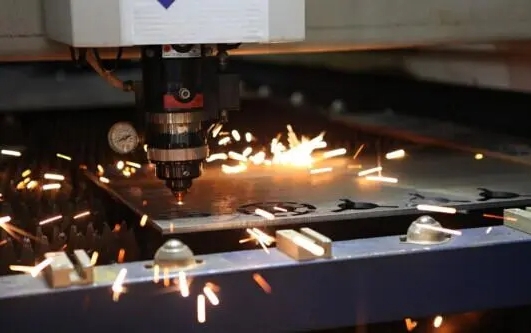The Importance of Automated Production Lines and Cutting-Edge Technologies in Metal Processing+ View more
The Importance of Automated Production Lines and Cutting-Edge Technologies in Metal Processing
+ View more
Date:2024-03-11 16:00
In today's manufacturing industry, possessing automated production lines and cutting-edge technological equipment such as laser cutting machines and precision punch presses has become a key factor for enterprises to improve efficiency, ensure product quality, and strengthen market competitiveness. These high-end devices not only speed up the production process but also ensure the precision and consistency of the processing. Let us explore the impact of automation and advanced technology on the metalworking industry through actual parameters and real cases.
Precision of Laser Cutting Technology
Laser cutting is a non-contact processing method known for its high precision and rapid cutting capabilities. Modern laser cutting machines typically use CO2 or fiber lasers and can achieve cutting tolerances of ±0.1mm. For example, the TruLaser series laser cutting machines produced by the German company TRUMPF can reliably provide this level of processing accuracy. Compared with traditional mechanical cutting methods, laser cutting reduces physical wear and lowers the risk of material deformation, thus ensuring dimensional accuracy and surface quality of the workpiece.
Efficiency of Precision Punch Presses
Precision punch presses play an essential role in the processing of metal sheet materials, especially when mass-producing parts. Taking Japan's AMADA company's servo-driven punch presses as an example, such equipment can reach punching frequencies of up to 1000 times per minute, with controllable punching force and an error range controlled within ±0.01mm. In addition, their automatic die change system significantly enhances production efficiency and flexibility, allowing production lines to quickly adapt to different production demands.
Consistency and Safety of Automated Production Lines
Automated production lines connect various high-precision devices, realizing automatic control of the entire processing flow through computer programming and monitoring systems. As a result, the efficiency of production is markedly improved, while the possibility of human error is greatly reduced, ensuring the consistency of product processing.
A real-life instance comes from BYD Auto in China, where the company's automated stamping production line introduced a robot automatic loading and unloading system, which significantly alleviated the labor intensity of workers. At the same time, by precisely controlling the stamping process, the uniformity of part shapes and sizes was assured, reducing adjustment time and costs during subsequent assembly.
Conclusion
For metal processing enterprises, having automated production lines and the latest technology is not only a symbol of productivity but also a safeguard of quality and efficiency. From laser cutting to precision stamping, and then to complete automated assembly lines, each technological leap is an investment in the future of manufacturing. Supported by actual parameters and proven by real cases, we can see that these advanced devices and automation systems have brought significant production benefits and competitive advantages to enterprises. As technology continues to evolve and its applications deepen, they will keep driving the manufacturing industry towards higher quality standards and efficiency goals.
Share to:
Recommend wonderful blog posts

